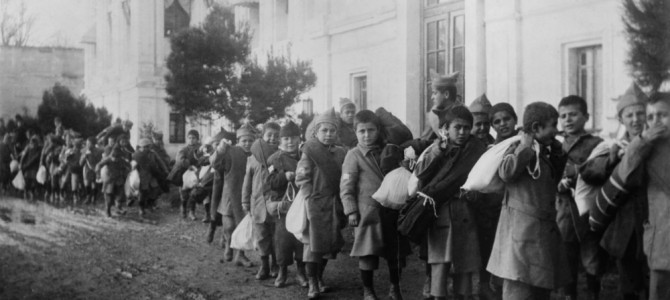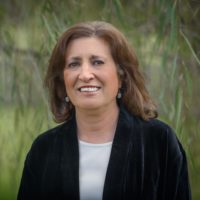
April 24 marks the centennial of the Armenian Genocide, a massive tragedy that brutally snuffed out the lives of 1.5 million Armenian Christians in the Ottoman Empire.
It was a systematic attempt to exterminate an entire race of people. And now, on the one hundredth commemoration, President Obama joins those who deny it by refusing to call it was it was: genocide. This is the seventh time he’s retracted his 2008 election-year promise that if elected he would recognize the Armenian genocide.
As the granddaughter of genocide survivors, it’s personal for me, and I grew up knowing all about it. But too few people today are even aware of what took place in that part of the world exactly 100 years ago.
Unfortunately, as philosopher George Santayana noted, those who cannot remember the past are condemned to repeat it. We can see today how the calamity that befell the Armenians 100 years ago seems to be repeating itself in the wholesale slaughter of Christians in the Middle East by ISIS and other terrorist groups. So I’d like to offer a bit of a primer on the Armenian Genocide.
What Happened?
About 1.5 million Armenian Christians were systematically slaughtered by the government of the Ottoman Empire. It was jumpstarted on April 24, 1915, when hundreds of Armenian community leaders and intellectuals were rounded up in Constantinople, arrested, and killed.
The goal was to exterminate every Armenian Christian, whether child, woman, or man. The killings themselves often included all manner of butchery, torture, and humiliation. My grandmother lamented the crucifixion of her father, who was known in the village as a holy man.
Another part of this extermination program involved deportations that forced Armenians out of their homes and basically put them on death marches into the Syrian Desert. Many died of starvation and exhaustion on these caravans. Others succumbed to diseases like typhus in lice-infested camp conditions. Young Armenian women who were not raped and killed could end up Islamified and taken in as wives or concubines. My grandmother’s younger sister was taken into a harem.
Some of the most harrowing accounts of the murders are included in the extraordinary memoirs of the survivor Bishop Grigoris Balakian, entitled “Armenian Golgotha.” For in depth documentation of the genocide online, I recommend this website.
Who Were the Main Actors?
The Armenians were Christians living in a Muslim empire. But their history as a civilization goes back thousands of years. Armenia was also the first nation to adopt Christianity—in 301 A.D. Before the massacres, Armenians were well integrated into the Ottoman economy as merchants, professionals, craftsmen, intellectuals, and farmers.
The Turks of the Ottoman Empire were Muslims who had previously tolerated Armenian Christians, though required them to pay the tax for not converting to Islam. By the time of World War I, the Ottoman Empire was on the verge of collapse, and the government of the Young Turk “Committee of Union and Progress” felt threatened by Armenian nationalists.
In the eastern provinces particularly, this was considered a problem, especially since Armenian communities existed on both sides of the Ottoman border with the Russian Empire. The three pashas were the architects of the genocide, and worked in concert to solve the problem of nationalism by systematically exterminating every Armenian.
The Turks were allied with the Germans whose engineers built railroads and tunnels in Turkey to expedite the war effort. While the Germans cooperated with Ottoman intentions for the Armenians, there was outrage from Western powers and observers.
Where Did This Happen?
The Ottoman Empire Extended throughout the Middle East and Asia Minor, and bordered both the Russian and Persian Empires. But some of the most concentrated activity took place in the regions of Anatolia and Cilicia, as well as the eastern provinces bordering the Russian Empire. Most of the deportations directed Armenians into the Syrian desert. One of the main stops on the way there was the city of Aleppo, where Armenians could be loaded onto freight cars. A map of genocide activity is here.
When Did the Armenian Genocide Happen?
The starting point was April 24, 1915, with the arrests of community leaders in Constantinople. The killings continued after the war, and included destruction from the Great Fire of Smyrna in 1922—which my grandparents also survived. Tens of thousands of Armenians and Greeks lost their lives in that fire and the Armenian and Greek sections of the city were utterly destroyed. By 1923, the killing relented. A chronology of the genocide is here.
How Did It Happen?
Propaganda manipulated public opinion. Perhaps most important to a genocidal plan is neutralizing any possible support for the victims. The Ottoman government maintained a well-coordinated propaganda campaign that demonized the Armenians in the eyes of their Turkish neighbors. Since literacy was very low in Turkey of 1915, the propaganda was repeated by word of mouth. According to Vahagan Dadrian, an historian of the Armenian genocide, the vilification of the Armenians was spread mainly through sermons by mullahs and by town criers who sprinkled the news about Armenians with words such as “traitors,” “saboteurs,” “spies,” “conspirators,” and “infidels.” Other means included dissemination of photographs of weapons that were labelled to convince Turks that their Armenian neighbors were storing up arms for use in plots to slaughter them. With enough ill feeling disposed towards Armenians—and a groupthink mentality—the program of extermination could take place with little resistance from the population.
Conscription rounded up the men. After the removal of Armenian community leaders and intellectuals in Constantinople, the Ottoman government focused more on the general population. First, the Armenian men were called into military service. My grandfather remembers when a horseman delivered the document, sealed in an envelope and tied with a red ribbon. Villagers gathered in the church to read its order that all Armenian men ages 20-45 were to report for service while all Muslims ages 24-30 would be conscripted. Thus, all able-bodied adult Armenian men in their prime were rounded up. Meanwhile, those remaining—the young, the old, and the women—were left without the protection or guidance of those men.
Confiscation of firearms prevented defenses. The government made a point of disarming Armenians and sent police into villages to search for and confiscate any guns. The father of my grandfather was charged with having firearms and was imprisoned. They never saw him again.
Deportations displaced the victims. Virtually every Armenian settlement in the empire was emptied out. The scene my grandfather describes in his memoirs was “Bedlam all around! The whining of the dogs, the lowing of the oxen, the bleating of the cows and sheep! The wailing cries of the women. . .” The wife of one villager was in active labor during the chaos, and was placed on a cart where she gave birth to a stillborn baby. On another cart, a villager placed his disabled adult daughter, who could neither speak nor walk. Her wailing was loud and pitiful, and ended when “a police guard split her skull with the butt of his rifle.”
Death marches wore them down. They were basically set up on caravans into the Syrian desert. Disease and armies of lic- infested concentration camps in places like Hama and Aleppo. There were no graves for those who died along the way. Many starved and died of dehydration if they were not killed outright.
Der Zor was the terminus for many. Der Zor was a place in the Syrian Desert, the last stop for those who survived the trek and is sometimes called the “Auschwitz” of the genocide. There was no camp, and the killings there often involved literal butchery by sword or ax. In 1990 a memorial complex and church were dedicated there to the Armenian martyrs of Der Zor. In September 2014, that church and memorial was destroyed by ISIS terrorists.
Why Is There Denial of the Armenian Genocide?
This is basically politics as usual. The Turkish government today is most outspoken in denying that this was an actual genocide. (The term “genocide” was coined in the early 1940s by the Polish lawyer Raphael Lemkin to mean systematic killing intended to wipe out an entire ethnic group.) Since Turkey has been viewed as a critical strategic ally for many nations, including the United States, many take their cues from Turkey and do not acknowledge that what happened was genocide.
One rationalization for denying the genocide is to say it’s a murky claim because it happened during war conditions when many groups suffered and died, including Turks. The fact is that World War I actually served as cover for a very well-documented system of extermination, as do many wars. In similar fashion, World War II would serve as cover for the Nazi Holocaust that resulted in the murder of six million Jews.
Everything about this killing program—the paper trails of people like U.S. Ambassador to Constantinople Henry Morgenthau and former President Theodore Roosevelt, the coordinated propaganda campaigns that demonized Armenians, the forced deportations that emptied out virtually every Armenian village in Turkey, the myriad witness and survivor accounts, the photography that had to be smuggled out because the Ottoman government forbade it—clearly indicated premeditation against unarmed civilian populations.
Pope Francis angered the Turkish government recently when he called the massacres a genocide. In response, Turkey recalled its ambassador to the Vatican.
Why?
This is the central question which always boils down to the essence of power politics. And human sin. We have the standard answers, but they don’t tell the whole story: Yes, the Ottoman government felt politically threatened and was on the verge of collapse. The Armenians made convenient scapegoats. Sure, there were nationalists among them, especially in the Eastern provinces bordering the Russian Empire whose religion was Christianity.
But, in the end, the Ottoman government really believed its problems could be solved only by brute force and the killing of innocents. Perhaps even more importantly, it happened because they expected to get away with it.
This is key. If we corrupt the language so that we do not acknowledge genocide when it happens—as President Obama just did—then we feed into the expectations of all potential perpetrators that they can easily get away with murder. So we are liable to see genocide and other forms of mass slaughter repeated. No true civilization can afford to falsify the historical record or corrupt the language.
Inscribed on one of the walls of the United States Holocaust Memorial Museum is a stark lesson in this. It is a statement by Adolph Hitler, who rationalized mass slaughter and expected people simply to avert their eyes and forget: “Who, after all, today speaks of the annihilation of the Armenians?”









